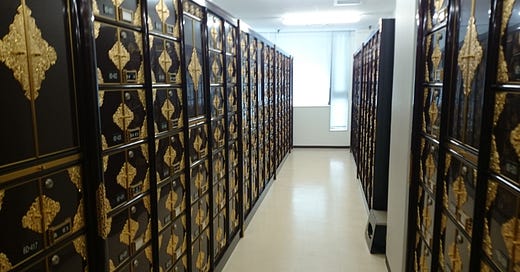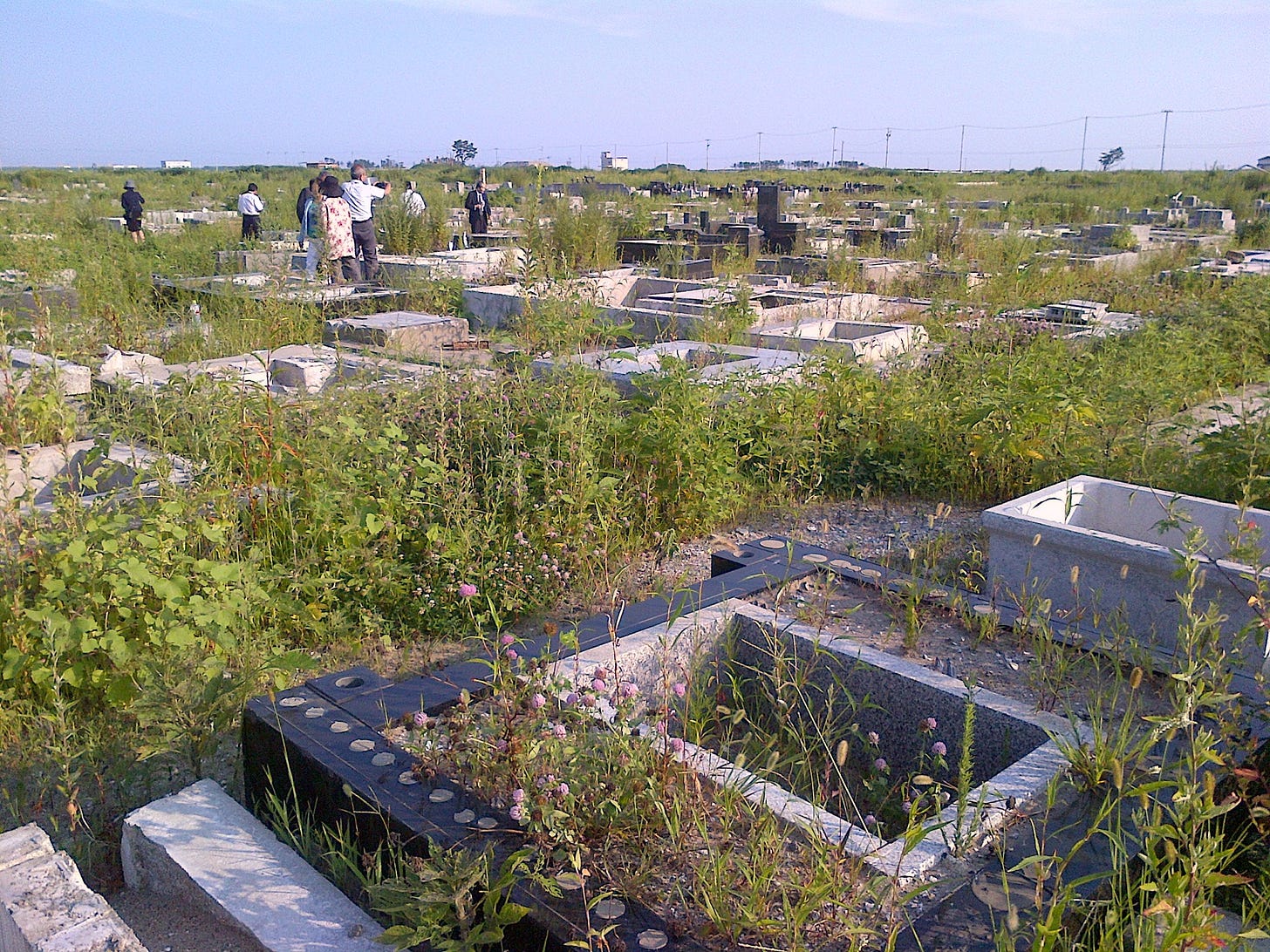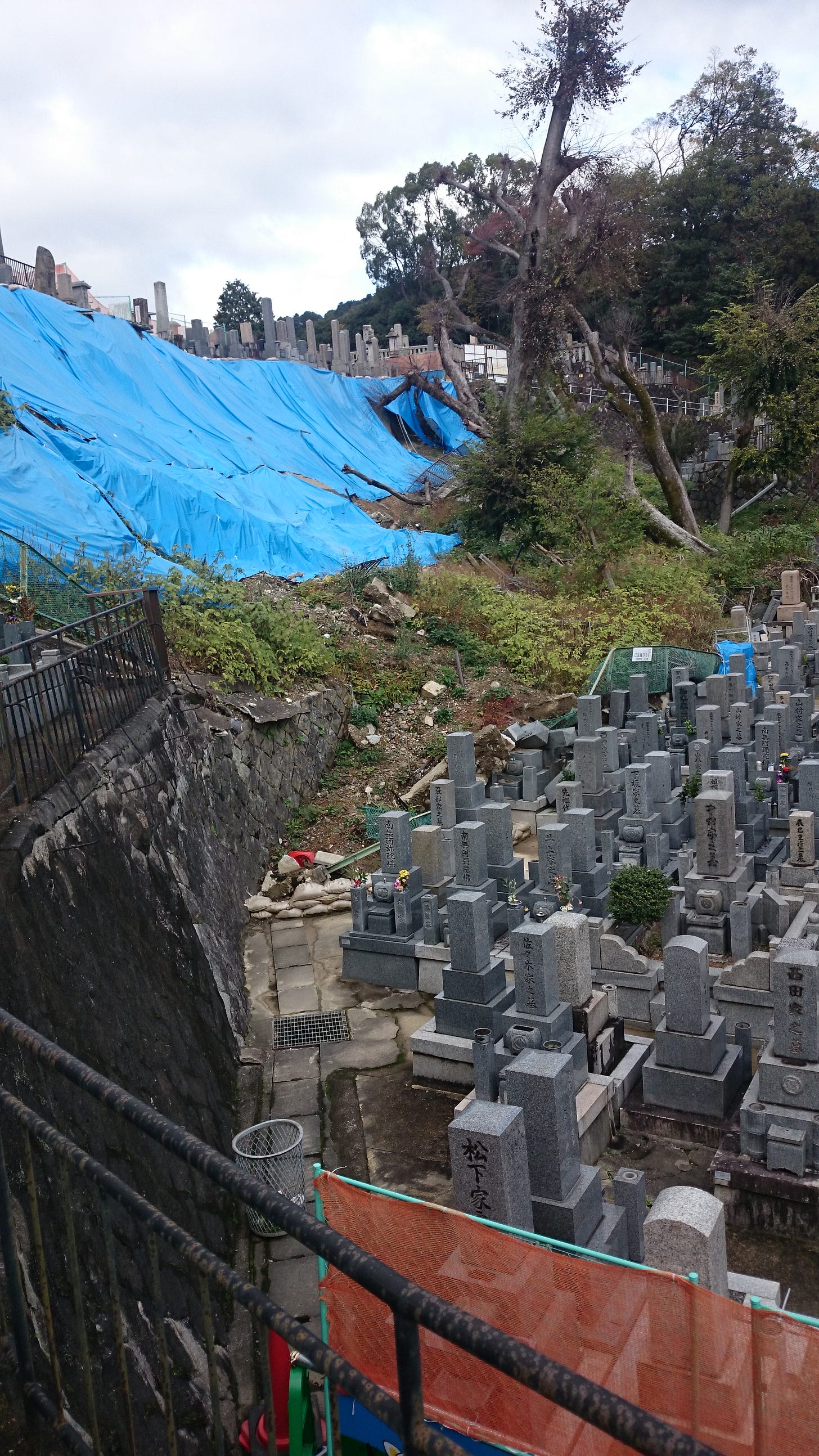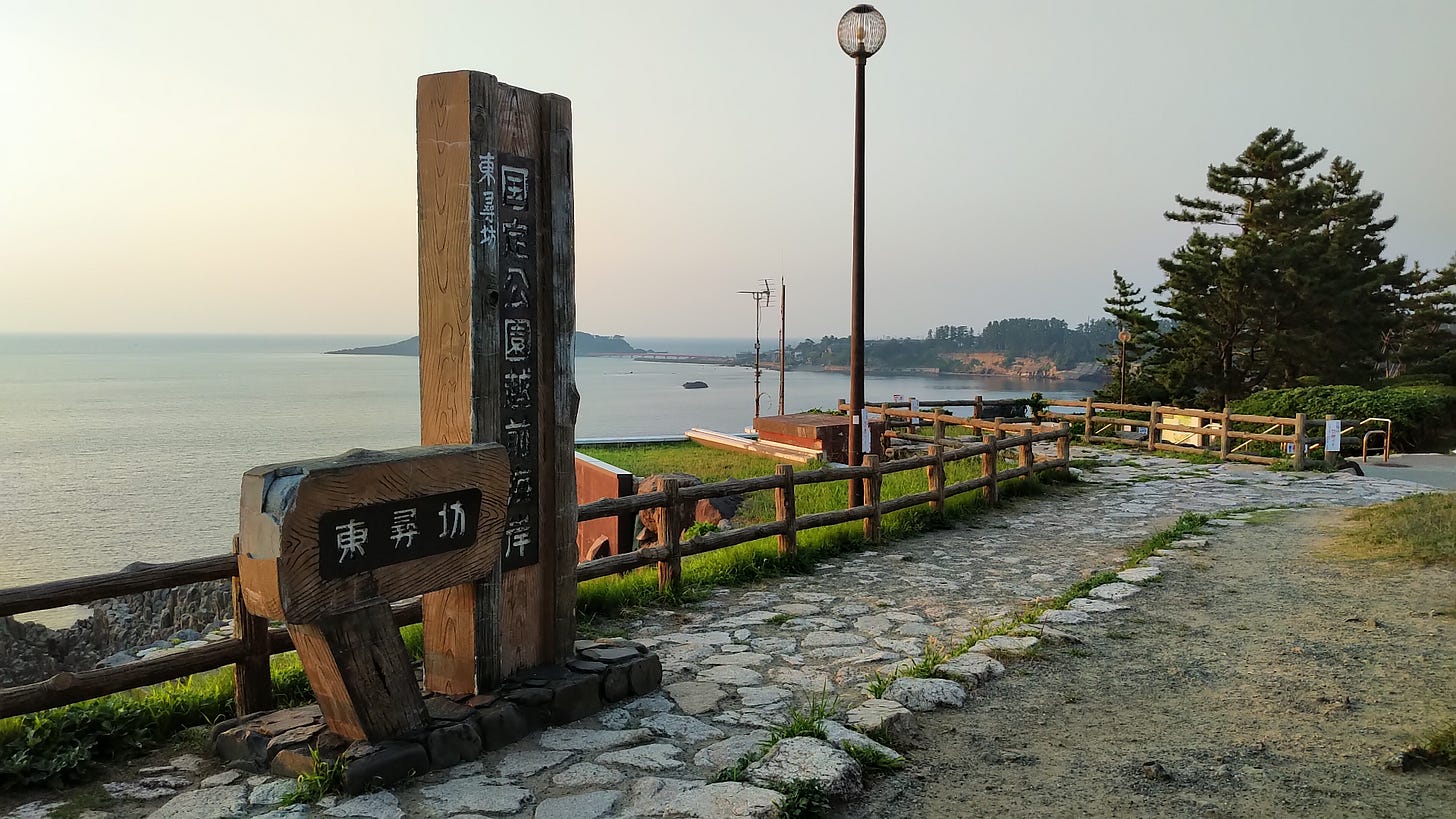How should a temple and cemeteries survive in 2025?
Death Industry is gloomy and complicated in Japan.
This is a follow up of the newsletter on ossuary business for temples.
Newsletter Sept. 13, 2023: Ossuary
I was talking with my friend lady priest (nun) / monk yesterday.
I wanted to get some advice of how web3 grave would impact her realm as running the temple.
Image is in Japanese what net-based graves can do.
Web3 base graveyard is to use blockchain technology running Ethereum as a Layer 1 platform, thus allowing to live forever, until the last machine dies from the face of this Earth. (I won’t go in-depth).
There are approximately 76,660 temples still erect in 2024 according to some resources. The ball park figure is 75K to 78K, according to Agency For Cultural Affairs Office in the government.
This number varies according to who and how it’s counted but let’s just say it’s about this figure. The number of shrines is even more, counting up to over 82,000.
It’s decreasing in numbers since there are no one to take care (not inherit but run the facility). But still, there are more temples than the convenient stores across Japan.
BTW, there about 68,500 dentists and 55,000 convenient stores.
This means that there are more temples than convenient stores and dentists but out of 76,660 temples, approximately 20,000 temples are without monks!
It’s basically empty (some other monks in another temple taking care of).
This leaves about an equal match against the convenient stores.
Convenient “KONMBINI” store business is another long story.
Many monks do not have worshippers “Danka” which leaves monks out of collecting from the charity system.
They simply cannot support themselves.
They need to take care of themselves, their family, the temple itself, pay many bills.
This makes monks do side hustle to stay afloat.
What would happen if the temple has no master?
Simply, another monk will be sent from the head temple, but not all the time.
Not everyone is willing to go or enough monks to take care of, thus another local monk in the same sect look after.
What happens if a natural disaster comes like the one on March 11th, 2011 that devastated NE Japan and washed away temples and tombs?
What happens if the temple goes broke and need to be liquidated by accumulating big debts?
This is an issue if there is a graveyard or not.
Ossuaries are easily moved but not always (there are issues of ossuary going broke recently).
Cemetery is “real estate”.
It’s land that cannot be used but it’s a “property” of the temple or some municipalities.
It becomes an unsolvable bad asset when the temple’s economy falls apart.
Picture below is from Kyoto’s Otani Mausoleum which the caused a minor landslide due to heavy rain in 2015.
Economy falling apart for the temples is due not only poor management but temples and cemeteries becoming unfavorable to people nowadays.
Temples had a place in culture and economy, including education in the old days but not anymore. It was also a place for the government to keep track of the population, basically, acting as a local city office.
Regarding cemeteries, there are laws restricting from people to developing graveyards in Japan under “Bochi Maiso Ho” (墓地埋葬法) — Graveyard Burial Laws established in 1948. Until then, household “clan” was able to erect family graves on their land.
This is why you see a graveyard in the middle of a rice field patties in rural area.
We have to understand that this law hasn’t changed much since executed, making it obsolete and out of date.
The land (graveyard) cannot be moved or renovated easily since there are bones underneath (not six feet under).
The modern tombs have “compartments” to place the urn, called “Karoto”. It’s not against the law to move or renovate when the temple gets bankrupt if there are no bones. Bones belong to someone (some family).
This becomes a very sticky issue of who owns it but cannot retrieve it back due to no trespassing on the private property if the gates are shut.
Which side is the law on? I do not know… This has been the case in Hokkaido and Kyoto recently.
Now comes the issue of self-sustaining the temples.
Temples needs income although they are tax exempt under religious acts of non-profit but they are taxable for profitable errands. There’s always a way to dodge these rules but I won’t talk about it here as well. Too deep and too dark.
But selling a web3 based tomb is NOT.
Although profitable, it’s a religious act of selling tombs, although virtual.
The temple can make money of this product and still write it off.
So, I messaged my good old friend nun.
Her temple goes back over 1000 years of history.
What I was talking about was how is the landing page I created using gamma.ai.
She told me it’s too complicated.
Things like web3, AI, blockchain are second nature to me.
She told me to simplify it and get rid of all the geek talks and explanations.
Tell the results (conclusion) first, and what it can accomplish, and if needed, jump to another page.
Yes, I’m here to shake the temple’s economy and make it better for those who follow.
The reason here is that I’ve seen many ossuaries go bankrupt due to extreme high maintenance cost.
These ossuaries and mausoleums tend to invest in high-tech equipment for impressing people, such as conveyer system that fetches the urn and bring it out.
The maintenance fee might be from 2M yen to 10M yen or even more if the system is large. They also tend to break down. Monks have no way of fixing them.
Companies that are making profit are the manufactures of the conveyer belt system.
In order to stop the poor vicious cycle of wear and tear is to simplify the equipment.
People just need a place to pray.
I’ve talked to monks, many monks due to past profession.
I’ve went on a quest for the lost grave of a friend.
Once lost, it’s a million in a one chance you’re recover it unless there are other leading information, but I found it after travelling 500Km to Tojinbo in Fukui.
Places like this, due to people moving out of inconvenient rural areas (Inaka), temples cannot sustain in the economy. No more funerals, no more rituals, no one comes for services.
Temples have to find other methods, like running yoga class, accumulating cats, yes, there is a temple called Gotanjoji in Fukui called “Cat Temple” and stand out.
Other than that, they simply cannot try to deprive worshippers from other nearby temples, where population is scarce. It becomes a war of attrition.
This is why I’m introducing a new method of web3 based graveyard, where you only need a smartphone or tablet.
I rest my caese.









